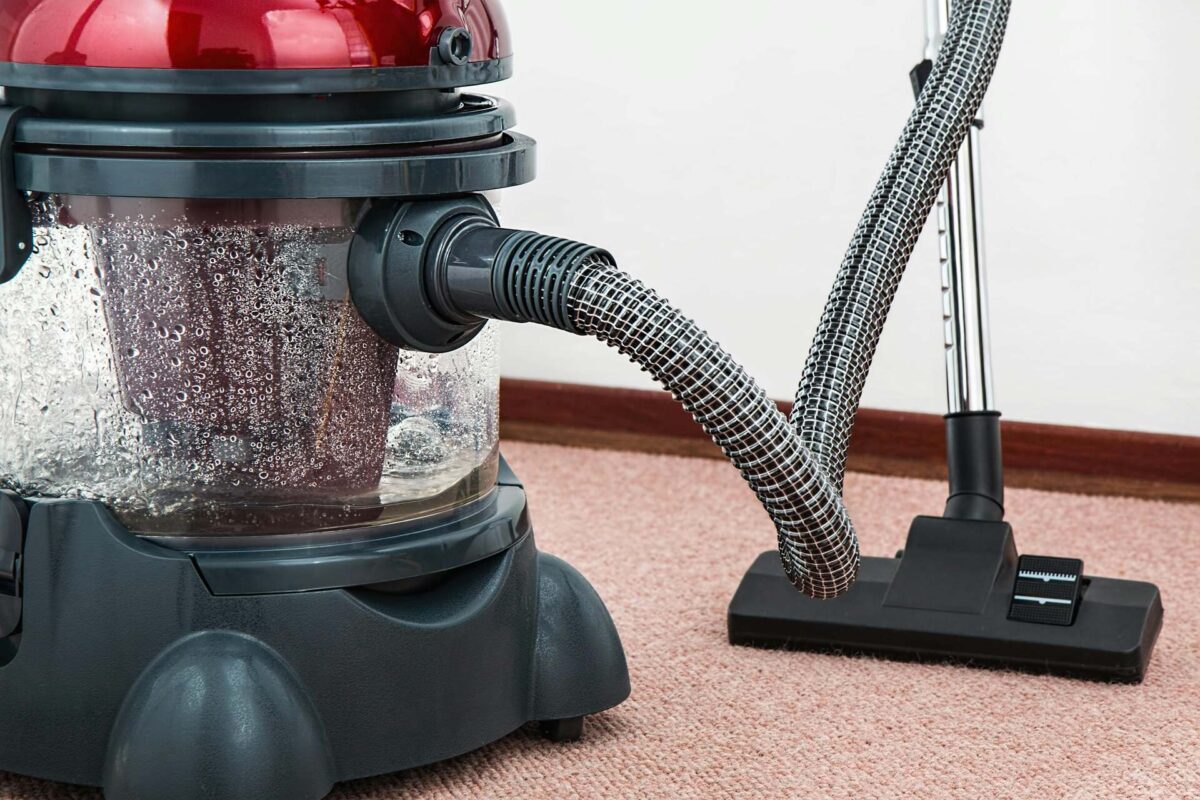While many cross-country moving companies may offer floor protection services, it’s better to be safe than sorry and be well prepared. Particularly when hiring movers to pack, load, or unload, protecting carpet during moving is crucial. Especially as you have too many things on your hands already, and cleaning carpets after moving furniture can be one task too many. Let’s delve into this often overlooked yet essential aspect of relocation preparation.
How to Protect the Carpet When Moving Across the Country
Relocation day can be a whirlwind of activity, with countless tasks to remember and execute. One aspect that often slips through the cracks is floor protection. To keep the home’s value intact, it’s important to know how to protect the carpet when moving.


How to Protect the Carpet When Moving
When moving cross country, it’s crucial to maintain the condition of carpeted flooring, since the team providing cross-country moving service will have lots of loading and unloading to do. Avoiding carpet wear and tear during the move involves assessing the protection needs of the flooring. It also includes identifying high-traffic areas and considering the type of carpet you have.
To protect everything properly, you’ll need to use heavy-duty floor protection materials such as self-adhesive films or drop cloths to shield carpets from dirt and damage. When handling heavy furniture, employ techniques like using furniture sliders to minimize friction and prevent dragging. Additionally, address any stains or damage promptly and ensure the proper removal of protection materials to avoid harming carpets.
Assessing Carpet Protection Needs
Diving into the cross-country moving process efficiently involves more than investing in cross-country moving services.
It requires careful planning for the move and attention to detail.
As you prepare for the move, and before Cross Country Moving Company arrives, safeguarding carpets from foot traffic is crucial.
The US population considers carpets important decoratively and as floor protection. In fact, according to Statista, the United States is experiencing a renewed interest in handwoven Native American rugs. It goes to show a growing appreciation for indigenous craftsmanship and heritage. If you have such a piece in your home, it’s only natural you would want to safeguard it from damage.
However, during the relocation day preparations, there are several key factors to consider. It includes identifying high-traffic areas, considering the type of carpet, and choosing the moving carpet protector. Let’s explore some valuable tips to help you protect carpets effectively while avoiding common relocation mistakes.
Identifying High-Traffic Areas and Vulnerable Spots
When working on preserving carpet integrity during relocation, take a stroll around the home and pinpoint areas where foot traffic is highest. These spots, such as hallways and entryways, are more prone to wear and tear during the first day of the move. Additionally, keep an eye out for vulnerable areas like corners or edges where carpets are more susceptible to damage.
Considering the Type of Carpet and Its Susceptibility to Damage
So, the cross-country moving company arrives soon, but there’s one thing to keep in mind – not all carpets are created equal. Some are more delicate and prone to damage, while others are more resilient. Consider the type of carpet you have and its specific carpet care tips for moving day. For example, plush carpets may require extra care compared to low-pile options.
Choosing the Right Carpet Protection Materials
Consider the type of carpet you have and the conditions of the relocation when choosing the right protection material. Self-adhesive carpet films are ideal for most situations, but drop cloths and cardboard can also be effective depending on your needs and preferences. We’ve compared carpet protection materials and methods in the table below.
| Carpet Protection Materials | Pros | Cons |
|---|---|---|
| Self-Adhesive Carpet Films | Easy application and removal. Excellent protection against dirt, spills, and foot traffic. Transparent, maintaining carpet appearance. | May not adhere well to certain carpet types. Adhesive residue if left on for too long. |
| Drop Cloths | Versatile and durable. Can withstand heavy furniture and foot traffic. Reusable for future projects. | Not specifically designed for carpet protection. Heavier and bulkier than other options. |
| Cardboard | Provides a barrier against scratches and minor spills. Easily customizable. | May flatten or tear under heavy furniture. |
Preparing the Space for the Move
As you gear up for relocation day, it’s crucial to prepare the space effectively to ensure a smooth and stress-free transition. Here are some essential steps to consider before applying effective carpet-covering techniques:
- Before the hustle and bustle of the big day, take the time to give carpets a thorough cleaning. This not only helps in removing embedded dirt but also safeguards against potential damage during relocation.
- Clear pathways are essential for a smooth process. Take stock of the home and remove any obstacles or clutter that could impede the movement of furniture and boxes. It will reduce the risk of accidents or injuries throughout the relocation day.
You can safeguard carpets and ensure a seamless transition to a new home by taking these proactive measures to prepare the space for the relocation day.
Applying Carpet Protectors Effectively
When applying carpet protectors like film, cloth, or cardboard, follow these simple steps to ensure effective protection for the floors. Start by thoroughly cleaning the carpeted area to remove any dirt or debris. Keep carpets clean with these easy tips – vacuum to remove dirt, handle spills with a carpet cleaner or mild detergent, and gently scrub stubborn stains with a carpet brush or sponge. For additional care, you should steam them for a deep clean, and ensure they are thoroughly dried to prevent mold and mildew.
Next, measure and cut the protector material to fit the desired area, ensuring complete coverage. Lay down the material smoothly, starting from one end and working the way across the room, pressing out any air bubbles as you go.
To secure the material and prevent slipping or shifting, use double-sided tape or adhesive strips along the edges. Additionally, consider the strategic placement of heavy furniture or objects on top of the protectors to keep them in place.


Managing Foot Traffic and Heavy Loads
Safeguarding the flooring doesn’t only include carpet covering for moving – it’s all about the right techniques that will minimize the stress on the carpets. Even when you plan to move out fast, you should protect the property. Start by designating clear pathways and directing foot traffic away from high-traffic areas whenever possible.
Place temporary carpet protection solutions, such as rugs or cardboard, in heavily trafficked zones to provide an additional layer of protection. When handling heavy furniture, use furniture protectors for moving or lift-and-carry techniques to prevent dragging and minimize the risk of damage to carpets. Of course, you can always hire a long-distance moving company to make it easier by disassembling the furniture. Long-distance movers such as Cross Country Moving Company often offer this service, along with packing assistance and other solutions.

Auto Transport
Cross Country Moving Company is the most trusted name in auto industry in the country.
Moving Insurance
Cross Country Moving Company is the most trusted name in the relocation industry in the country.

Storage
Cross Country Moving Company is the most trusted name in auto industry in the country.
Temporary Solutions for Staircases and Hallways
Before hired cross-country movers arrive, make sure you’ve temporarily protected staircases and hallways. For stairs, use carpet film or heavy-duty cardboard runners to shield each step from dirt and damage. Secure these protective materials tightly to ensure they stay in place during the move. In tight corners or narrow hallways where standard protection may not fit properly, opt for custom-cut cardboard or foam padding to provide tailored coverage.


Post-Move Carpet Care
Transitioning into a new home marks the beginning of a new chapter, and caring for carpets post-move is essential for maintaining their pristine condition. So, if you want to ensure that carpets remain clean, fresh, and in top condition for years to come, you should take care of them after the move, too. Once you start unpacking in the brand new home, it’s important to care for carpets properly. Here are some tips:
- Peel off any protective materials carefully to avoid causing damage to carpets. Lift them gently, pulling away from the carpet fibers.
- If any stains or damage occurred during the move, address them promptly. Treat stains with a carpet cleaner appropriate for the type of stain, following the product instructions carefully. For damage, consider consulting a professional carpet cleaner for repair options.
- Give carpets a thorough deep cleaning to refresh them after the move. You can rent a steam cleaner or hire a professional carpet cleaning service to ensure a deep and effective clean. Use carpet shampoo or specialized cleaning solutions for a more thorough refresh.
- Maintain the cleanliness of carpets by vacuuming them regularly. Aim to vacuum at least once a week, or more frequently in high-traffic areas, to remove dirt, dust, and debris that can accumulate over time.
- Prevent excessive wear and tear on carpets by periodically rotating furniture. This helps distribute weight more evenly and reduces the likelihood of permanent indentations or traffic patterns.
Taking care of carpets post-move is crucial for preserving their freshness and longevity.


Ensuring a Smooth Transition With Long-Distance Moving Services
Preventing carpet damage while moving is essential for a smooth transition to a new place. By following best practices such as using heavy-duty floor protection, wrapping furniture legs, and cleaning carpets before relocation, you can safeguard against damage and maintain the integrity of carpets. Preserving carpet condition not only enhances the appearance of new space but also saves you time and money in the long run.
With proper care and attention, your carpets will continue to provide comfort and beauty for years to come. For professional assistance with the move, contact Cross Country Moving Company. Our expertise and dedication ensure a stress-free relocation experience.
Frequently Asked Questions
What are the Best Materials to Use for Carpet Protection During a Move?
The top materials for protecting flooring during a move include self-adhesive films, which offer ease of application and removal while providing excellent protection against dirt and damage. Drop cloths are another effective option, known for their versatility and durability, making them ideal for shielding floors from scratches and spills. Additionally, cardboard provides a cost-effective solution, offering a barrier against potential damage while being easily customizable to fit specific areas or furniture shapes.
How Do I Protect My Stairway Carpet When Moving Heavy Items?
When handling heavy items, shield the stairway with heavy-duty cardboard runners or specialized protective film.
Can I Reuse Carpet Protection Materials for Future -moves?
You can reuse protective materials for future moves if they’re still in good condition and haven’t been damaged.
What Should I Do if My Carpet Gets Damaged During the Move?
If flooring sustains damage during the move, address it promptly by treating stains or consulting a professional cleaner.
How Can I Ensure the Removal of Protection Materials Doesn't Damage My Carpet?
To ensure the safe removal of protective materials, peel them off carefully, pull away gently, and avoid using excessive force.








